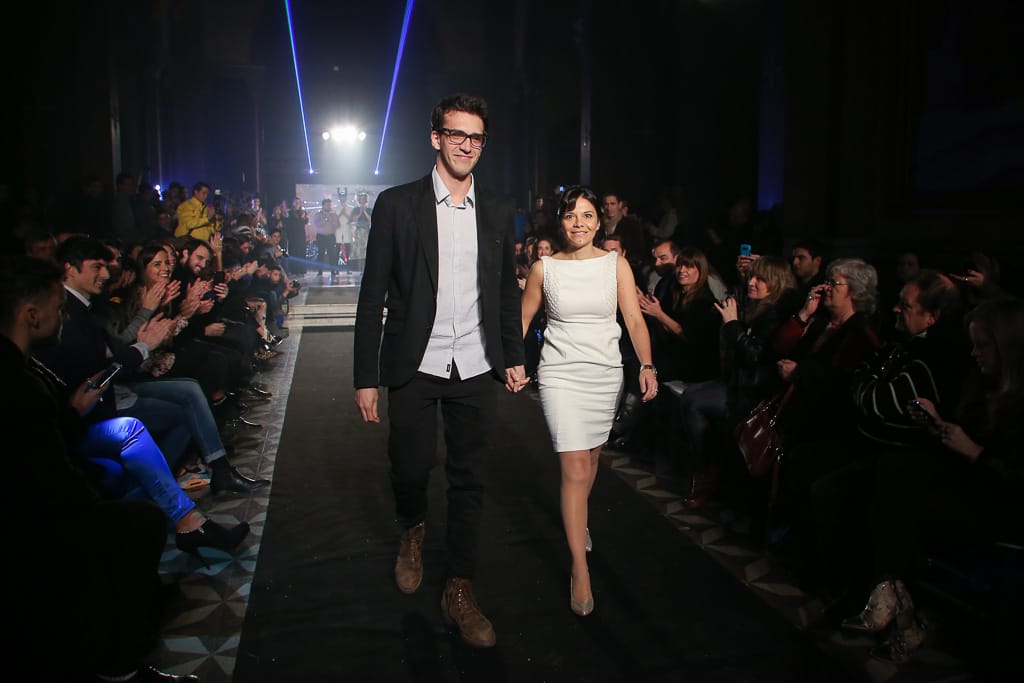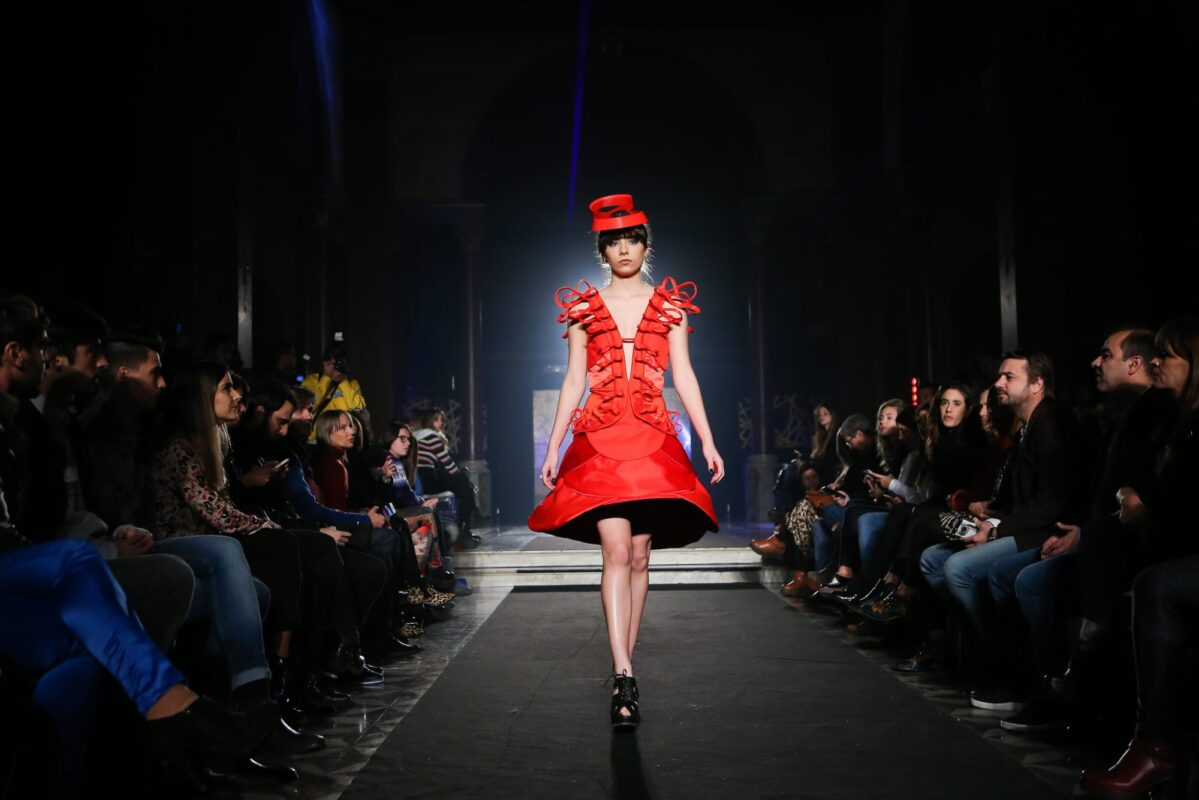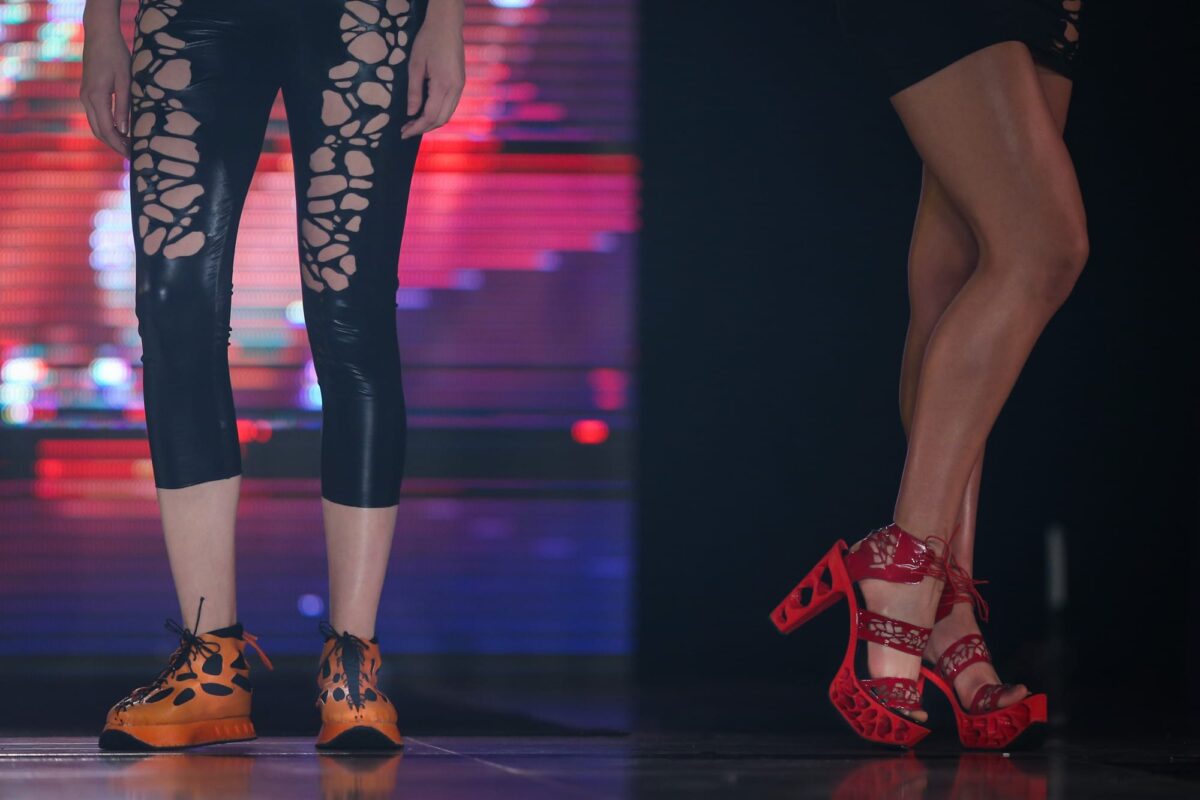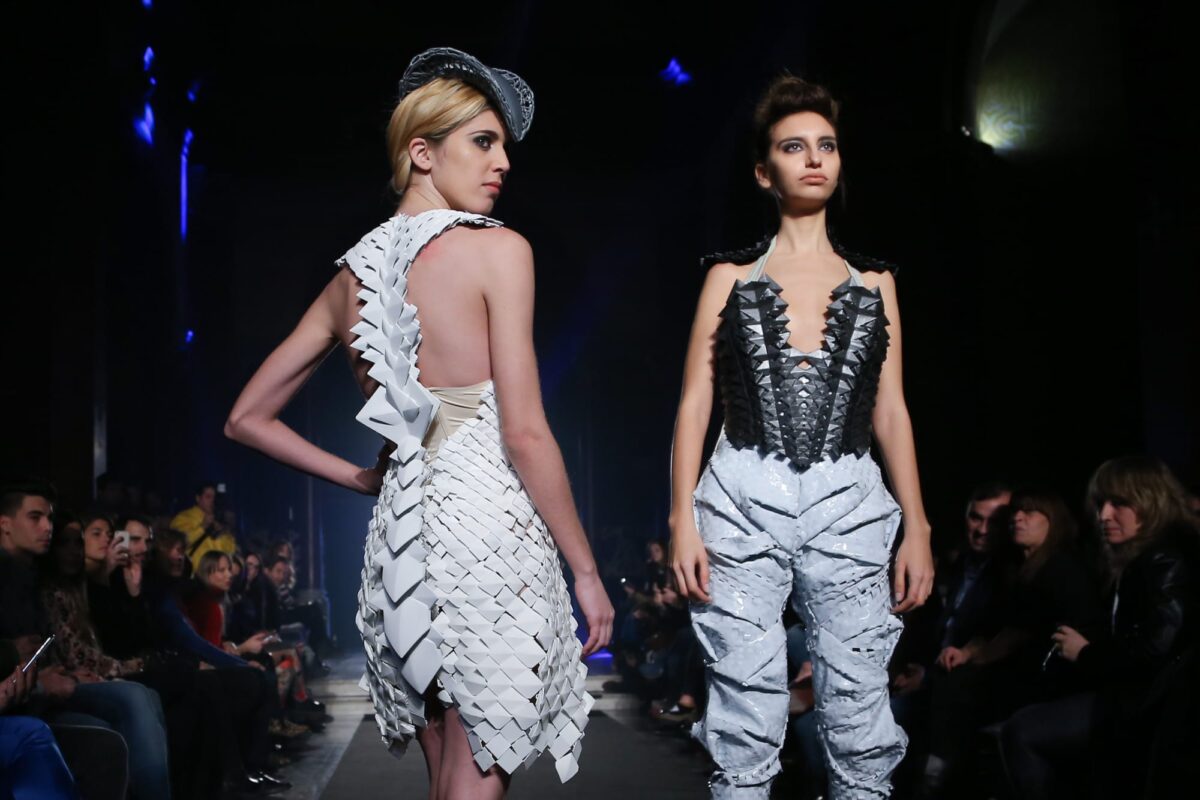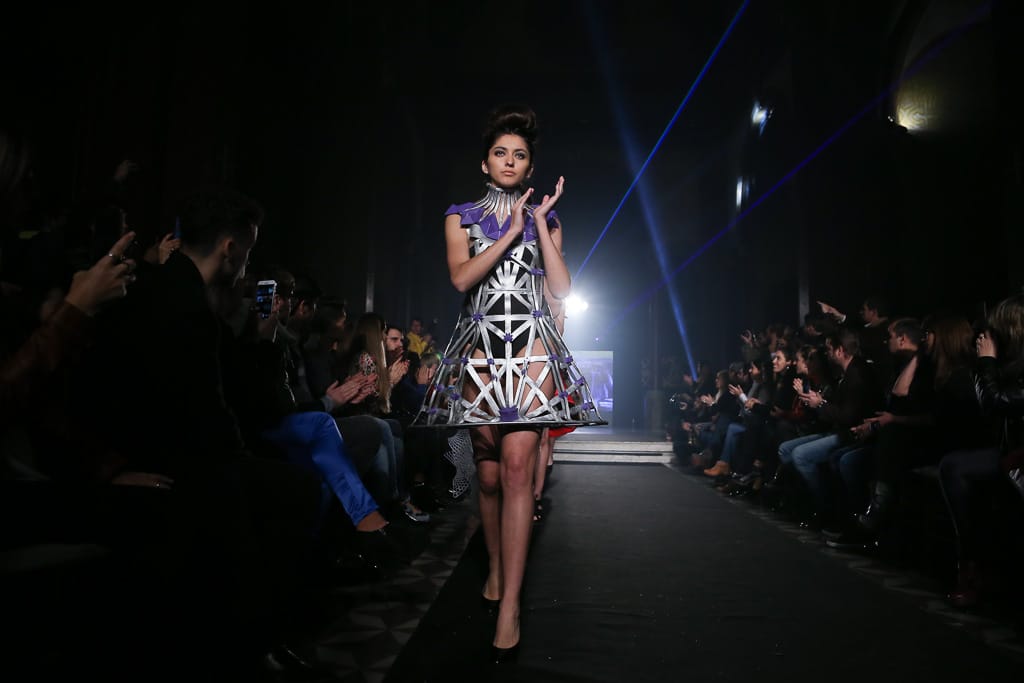Technology is a tool at the service of creativity to help us do things faster and better. This is one of the conclusions we came up with while talking to Irene Presti. She has a degree in Visual Arts, is President of the Cámara Argentina de Impresión 3D y fabricaciones digitales (Argentinean Chamber of 3D printing and digital manufacture), and works at Like 3D, a service company that helps people to materialise their ideas through printing.
Presti is quite busy these days. Apart from her daily jobs, she has helped coordinate the creation of a degree in Design and 3D at the National Technological University (UTN), which has recently been launched. She is also finalising details of the 3D Printing Argentinean Congress, which will take place in Buenos Aires in early April.
As a creative and restless person herself, Presti was the Director of 3D Fashion Day, a fashion show set in June of 2016 in Córdoba province, Argentina. It was the first runway to offer twenty-nine outfits made entirely with 3D printers and other disruptive technologies by fourteen designers from Argentina, Colombia and Brazil. The following are excerpts from our conversation.
How was 3D Fashion Day born?
I’ve been organising conferences or congresses about 3D printing since 2014 with the aim of divulging this technology because it was practically unknown back then. So, I was at 3D Interaction, an event organised by Mariano Pedernera, in Buenos Aires. I visited him in 2013 and asked to bring the congress to Córdoba.
We did it in 2015 with Sebastián Turk, my partner in Like 3D. Since I have a degree in Arts and I love to combine art and technology, I couldn’t help myself and I proposed to make some shoes. I have always been crazy about design in general and fashion is one of the most applicable parts of it. Anyway, he indulged me. I convened a footwear designer to put it together. And I also called a classmate from university to make a headdress and a friend of hers to create clothing. We helped them and we printed the pieces.
As a result, we presented a fully dressed model during that first congress in Cordoba. People went crazy and the congress became distorted. (She laughs.) It was only a small presentation, but magazines started calling me, asking when there was going to be the fashion show and I replied that there wasn’t any, it was only a girl wearing a suit, that was all.
It got so much repercussion and I liked doing it even though we hadn’t had so much time to do it and the results were incipient. For the following year, 2016, I wanted to put on a fashion show but hesitated until Guillermo Asis encouraged me and offered to help me. I don’t know much about fashion shows. I was organising the annual congress and it was basically a marketing strategy to demonstrate that 3D printing also covers fashion, on top of all the other rubrics and sectors, such as industrial design, architecture, automobile, medicine, etc. And, as a matter of fact, the first principle is the exclusivity: the customisation that can be accomplished through 3D printing. You can really create a complex design and print it. This was what we wanted to show.
How did you managed to organise it?
We convened some designers, Benito Fernández and Ricky Sarkany amongst them, as benchmarks. Many of them declared that they had no idea about how to work with 3D printing. Some designers struggled because it is hard to see the three-dimension of the creation. They are used to drawing a sketch and then cutting a fabric, which is still plain.
We asked all of them to draw something, bearing in mind that it would have to be printed. Then, some people translated the designs into 3D models and we printed the pieces. These parts came back to the fashion designers, who put together the garment on a mannequin or added other missing parts. Some of the objects were completely printed, for example: handbags and accessories.
Finally, the fashion show was carried out with twenty-nine outfits and caught attention because this had never been done before in Latin American. Something similar had happened at New York, London and Paris Fashion Weeks but only as a few looks and with small parts done in 3D printing. Then I saw a MET Gala, because 3D printing was advertised there, but there was scarcely any participation. Ours was fully done in this way. We printed clothing, footwear, headdresses and accessories. So, we’re planning to make it bigger for the next time.
What is the next step for 3D Fashion Day?
I don’t know if we will be able to plan it for this year, because of the costs. Guillermo wanted to launch the convene, to see who would postulate. However, my idea is to reduce the number of designers, to no more than three or four, and find those who already have a basic knowledge of 3D printing. Probably, some names would come up from a training course we’re planning.
On the other hand, I’m thinking about having a 3D Fashion Day in Buenos Aires or in another Latin American city because it is no use to repeat the experience here in Córdoba. We are in talks but don’t have anything concrete yet. The main difficulty is finding the funds, it means a lot of money, which is difficult to collect. And, on top of that, it requires a lot of work and stress apart from my daily job. Nevertheless, we probably will repeat the experience.
Taking into account all of your activities, what is your focus point?
My strong point is in training because I believe that this is the turning point for people who don’t know what 3D printing is, its technique and how to apply it. Precisely, I observed this failure in the fashion field. Actually, I am currently setting up some intensive training courses that will be launched in a few months in Buenos Aires and then we’ll take them to other countries. These will be taking place during four entire days and will be centered on fashion designer’s work: how to draw and print a complete garment. But this can be adapted to other related fields or activities, maybe costume designs or just for runways.
What is your vision on the matter?
We must educate people to embrace it. You can have a sewing machine, an iron, a 3D printer: those are all plain tools. Nevertheless, it strikes me that it is fundamental for people to learn to think, to be creative. Nowadays, most of all designers don’t design or create. They are driven by the need to sell, which indeed happens to all of us. When there’s a need to sell creativity is a bit killed. I believe it is important to learn to draw from scratch, to watch a lot of things, see art history. This helps a lot.
Anyway, what I mean is that clothing should have a meaning, should imply a way of expression. We lose something when we prioritise the act of commercialisation. I was educated at a university where if you couldn’t justify what you were doing, it was worthless even though it was a wonderful piece. You ought to have a valid explanation of why you had created it. That is my aim: to educate in design, more than in using the machine, which is a mere tool.
Do you think that Argentinean fashion designers are open-minded about 3D printing?
The designers that participated were left wanting to do more with it. However, they do not know the subject, so they may also seem fearful. I had a conversation with many of them and they felt they needed to explore it more deeply. And some people have contacted me after the event showing real interest. They are all mad about the possibility to learn how to use it. That is the key: they must learn.
What do you think is the impact of 3D printing in fashion?
In my view, the greatest impact is the customisation and the fact that the world trends are heading to a completely personalised fashion. Actually, the client could be able to combine several pieces to put together a final tailor-made one.
For instance, let’s take the sole or base of a shoe. Usually, this part is the same for a whole collection and what varies is the design of the toe cap and vamp. This restricts the design to a high level, because those soles are the only ones available in the market. However, you could design your own model, and create a mould to print small series as complex as you want to.
As for clothing, there is still a long way to go, because the material is not a cloth or fabric. It is what is missing: the discovery of a suitable material to be in contact with the skin. But it is currently fitted to create accessories.
'We must educate people to embrace 3D Printing. You can have a sewing machine, an iron, a 3D printer: those are all plain tools. Nevertheless, it strikes me that it is fundamental for people to learn to think, to be creative'. Irene Presti
What are the advantages and disadvantages of 3D printing in Fashion?
I believe that the main disadvantage is the lack of a material similar to cloth, as previously said. Another one is represented by the costs and time that it takes to print clothing. For example, the soles of my shoe took approximately thirty hours to be printed, for each piece. Printers are still slow in their printing process. And that is precisely what makes it expensive.
The advantage, in my opinion, is focused on the accessories rubric. Beyond the final piece, I think it is extremely useful for obtaining moulds for the smelting in the creative process of jewels, achieving a high quality and complex, creative designs.
Another rubric that benefits from 3D printing is disability and prosthesis. We now can create aesthetically beautiful and attractive pieces, as well as customise them, for disabled people with different body shapes. In addition to this, they can add robotics to a printed piece to make everyday life easier. This is the nicest aspect of it all.
The bottom line is that 3D printing gives an open field when it comes to general design: you can make it as complex as you want to, and create whatever you want to, because it can simply get printed. In fashion, you are limited and need to meet a standard whereas you don’t have to in 3D printing. You can play with the form and its complexity. This is what I noticed as an artist; I do what comes to my mind. I draw it and print it, period. This is what attracted me about it.
In conclusion, we must advance in a material for clothing and in shortening the printing times. But technology moves fast, so I don’t think these will take too long to be figured out. New materials are discovered on a monthly basis.
What difference is there between the traditional creative process in fashion design and 3D printing?
In the traditional process, you draw a sketch, then transfer it to the cloth, cut the pieces and put them together by sewing. Every step is almost entirely manual. In this case, the process goes through a computer; the 2D sketch is digitalised and converted into a 3D model. We can even scan the body of the user with a scanner that captures your measurements and body shape and we can store that information. Then, we can work based on your body, create a model and print it.
'When there's a need to sell, creativity is a bit killed'. Irene Presti
That would be excellent to stop the lack of diversity in sizes in the future.
Absolutely. We will have your exact measures and make tailor-made clothing and accessories. The starting point is the body shape exactly as the person is, with all of his/her “imperfections” (a hump, a smaller breast, etc). I can have you totally scanned from head to toe in half an hour and then see what I can design over your own body. This is a change of paradigm that I don’t think would take too long to arrive.
So, the interesting thing is not always the final printed product, but the steps we can take in the middle, such as scanning and digitalising the body. It means seeing us as human beings and designing for ourselves, taking into consideration our particular needs and tastes.
A further advantage is related to fashion’s mandates. Something is fashionable and imposed over a period of time. You can visit all the stores and see the exact same clothes because it is what’s in, it’s the trend of the season. And you won’t find anything else. So, these tools (3D printing, scanners and laser used to cut) help us to gain diversity.
What is 3D printing’s reality in Argentina, beyond fashion field?
Its application is increasing over the past few years. There are approximately seventeen local manufacturers of printers in Argentina and there is a vast number of companies that offer the service. 3D printing is being applied to many things: in art, in industrial prototypes and spare parts, in education for industrial designers (almost all universities present the student’s work this way), in architecture and medicine. It caught my attention that Universities and schools are trying to adopt this technology for workshops and laboratories and teach kids how to use it, which is great because they’re educating tomorrow’s creators. The field has grown considerably because of its demand. People looking for printed key-chains, corporate gifts, and merchandising push the market.
How do you think it will evolve in the future?
It is expected that in the future there will be a 3D printer in each home worldwide, just like now we have the one for printing paper. I don’t really agree with this. Not all of us have a sewing machine in our house. I do this comparison: there are people who don’t like to build or make things, that don’t like to get their hands dirty (She laughs). Nevertheless, the ones who really enjoy doing it will have the opportunity because costs are decreasing, so it is actually affordable.

